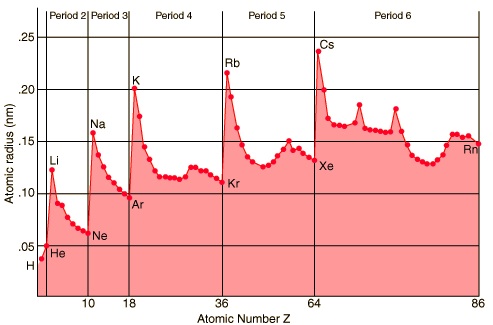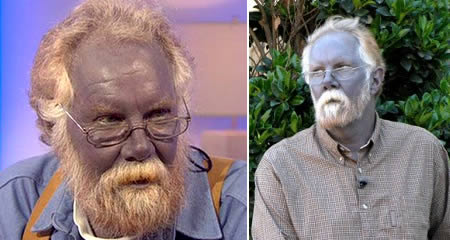Nano Questions
Day 1 Scale
What is the density of cosmic dust?
According to George Mason University Astronomy: http://astro.gmu.edu/classes/a10695/notes/l08/l08.html
There are on the average of 1000 dust particles in each cubic kilometer.
or 10^-12 particles per m^3
What is a model of a photon?
Electrostatics: Charge styrofoam...electrophorus rub styrofoam with wool.
Explore Electric charge with Scotch magic Tape
The sign of the mobile charge carrier was first measured by Tolman and Stewart.
They used a galvanometer to measure the charge distribution in an accelerated metal.
If a copper metal block was acelerated upward the bottom became negative relative to the top. Because the negative electrons had inertia and were mobile.
So as the atomic cores of the copper atoms acclerated upward the conduction electrons were free to lag behind and accumulate at the bottom.
Powers of 10 the video is available on VIMEO http://vimeo.com/819138
The length of a photon
The transition from a 2p to a 1s orbital can take 10^-8 s. Durring one transition the electron is in a superposition of the 1s and 2p orbitals, it oscillates back and forth between these orbitals at the frequency of the emitted light. 6 x 10^14 Hz for the transition time of 10^-8 s. The length of the photon is 3 x 10^8 m/s x 10^-8s = 3 m.
In this 3 m of length there are 6 x 10^14 s^-1 * 10^-8 s = 6 x 10^6 oscillations of green light.
The width of the probability density wave parcel is gaussian in profile and mostly contained within a diameter of 1 wavelenth 550 nm.
The diameter of an atom
Feynman quote
Physicist Richard Feynman once said that if he knew that all scientific information was going to be lost, but that he could pass on one sentence to the future it would be a summary of the atomic theory: All the world is made of atoms, small indivisible particles that repel each other when close together and attract each other when a little ways apart.
From the physics Factbook: http://hypertextbook.com/facts/MichaelPhillip.shtml
"The diameter of an atom ranges from about 0.1 to 0.5 nanometer"
P.W. Atkins Physical Chemistry P409 "One finds that all atoms are roughly the same size with d = 0.3 +- 0.1 nm." Note in this quote he says r but he means to say d for diameter.
But actually atomic radius is a bit more complicated than this.
From hyperphysics we have this plot of atomic radius http://hyperphysics.phy-astr.gsu.edu/hbase/chemical/atomrad.html#c1

Day 2 Tools
Big Ideas in Nanoscale Science, NSTA The 9 fundamental science concepts for nanotechnlogy.
Magnet Viewing paper From Educational Innovations
Earth globe with a magnet inside 3D compass (Magnaprobe) from Arbor Scientific
scanning light microscope
Sodium Alginate http://en.wikipedia.org/wiki/Alginic_acid, To buy sodium alginate
Rydberg atoms
3 Self Assembly
Troy's links to liquid crystal labs
http://mrsec.wisc.edu/Edetc/nanolab/LC_prep/index2.html
http://mrsec.wisc.edu/Edetc/nanolab/watch/index.html
http://mrsec.wisc.edu/Edetc/nanolab/LCD/index.html
Airplane center of gravity, center of pressure.
“Deletum 5000’s special ingredient is silica. It is loaded with particles of the stuff that are but a few nanometres (billionths of a metre) across. These particles have had both oil-repellent and water-repellent molecules attached to their surfaces. Both are necessary, since the materials used by graffiti artists may be oil-based or water based. However, if merely mixed together, the two would end up repelling each other, and thus separating. By attaching them to the silica, this mutual loathing can be overcome and, as the paint dries, the changes that take place force the oil-and-water-proofing to the surface. The result is that most agents used by graffiti artists will not stick to that surface—and what does stick can be washed or brushed off easily.”
Powdered donut solar cell http://www.youtube.com/watch?v=bVwzJEhMmD8
Wisconsin MRSC nano explorations
Silver as an antimicrobial http://microbewiki.kenyon.edu/index.php/Silver_as_an_Antimicrobial_Agent
Antimicrobial silver Discovered in 1893 by the Swiss KW Nägeli as a toxic effect of metal-ions on living cells, algae, moulds, spores, fungi, virus, prokaryotic and eukaryotic microorganisms, even in relatively low concentrations. This antimicrobial effect is shown by ions of: mercury, silver, copper, iron, lead, zinc, bismuth, gold, aluminum and other metals.
Especially heavy metals show this effect. The exact mechanism of action is still unknown. Data from silver suggest that these ions denature proteins (enzymes) of the target cell or organism by binding to reactive groups resulting in their precipitation and inactivation. Silver inactivates enzymes by reacting with the sulfhydryl groups to form silver sulfides. Silver also reacts with the amino-, carboxyl-, phosphate-, and imidazole-groups and diminish the activities of lactate dehydrogenase and glutathione peroxidase. Bacteria (gram+ and gram-) are in general affected by the oligodynamic effect, but they can develop a heavy-metal resistance, or in the case of silver a silver-resistance. Virus in general are not very sensitive. The toxic effect is fully developed often only after a long time (many hours).
From http://www.saltlakemetals.com/Silver_Antibacterial.htm
Blue skin as a result of ingesting silver. 
0.1 milligram of water/ 18 g/mole = 5 x 10^-6 moles x 6* 10^23 = 30 * 10^17 = 3000000000000000000. molecules of water
Butterfly irridescence
http://newton.ex.ac.uk/research/emag/butterflies/iridescence_in_nature.html
says Sir Isaac Newton in his book Opticks, published in1704, put forward a reason for the iridescent nature of the colour from the feathers of peacock tails.
Digital microscope Celestron $50 10x to 150x USB
Opal 
Layers of silica balls in opal create irridescence.
Blue morpho buttefly
From http://eprints.ecs.soton.ac.uk/10031/1/Chapter1.pdf
The wings of M. rhetenor [17] are tiled with a single layer of blue scales.
These scales are typically 75μm by 200μm in size. On the upper surface they
have a longitudinal ridging with an in-plane periodicity of (675
± 75)nm. The
ridges have a pine-tree cross-sectional shape as shown in figure 1.2, with ten
branches attached on both sides to a central stem, horizontal and regularly
ordered, with a vertical thickness of about 90nm. The thickness of the air
interstices is also about 90nm, which results in an average periodicity of
180nm. The trees are wide with respect to the in-plane periodicity and the
cuticle material (chitin) fills approximately 30% of the volume occupied by
the structure.
The index of refraction of Chitin is 1.56
c = L f c = speed of light, f = frequency, L = wavelength
The frequency of the light remains constant so c/L is a constant
In chitin the speed of light is reduced to 2/3 of the speed in a vacuum. c = cvacuum /n
The wavelength of blue light in a vacuum is 450 nm, in pure chitin it is Lvacuum /c vacuum = Lchitin /c chitin and so L chitin= L vacuum * L Cchitin/c vacuum
L chitin = 450 nm 2/3 = 300 nm
now the wave travels through 50% chitin 50% air so the wavelength averages to 375 nm. and half a wavelength is 190 nm very close to the 180 nm spacing between the tops of the tree limb pattern.
Great book "The Gecko's Foot" http://www.amazon.com/Geckos-Foot-Bio-inspiration-Engineering-Materials/dp/0393062236
polystyrene spheres how to make them.
Polysciences makes polystyrene spheres.
Peacock Color A scientific article.
Beetle colors from Rashmi http://www.nsf.gov/news/newsmedia/beetles/
Liquid Crystal Labs
